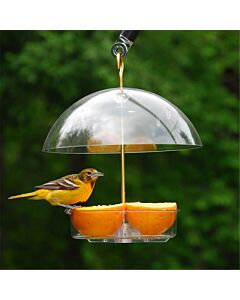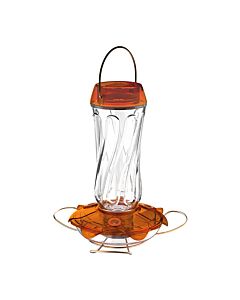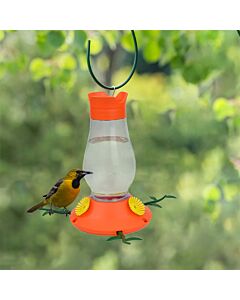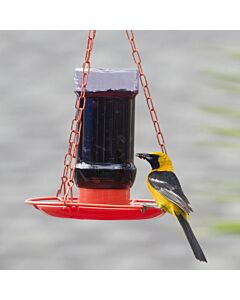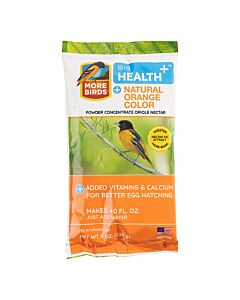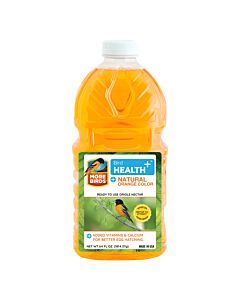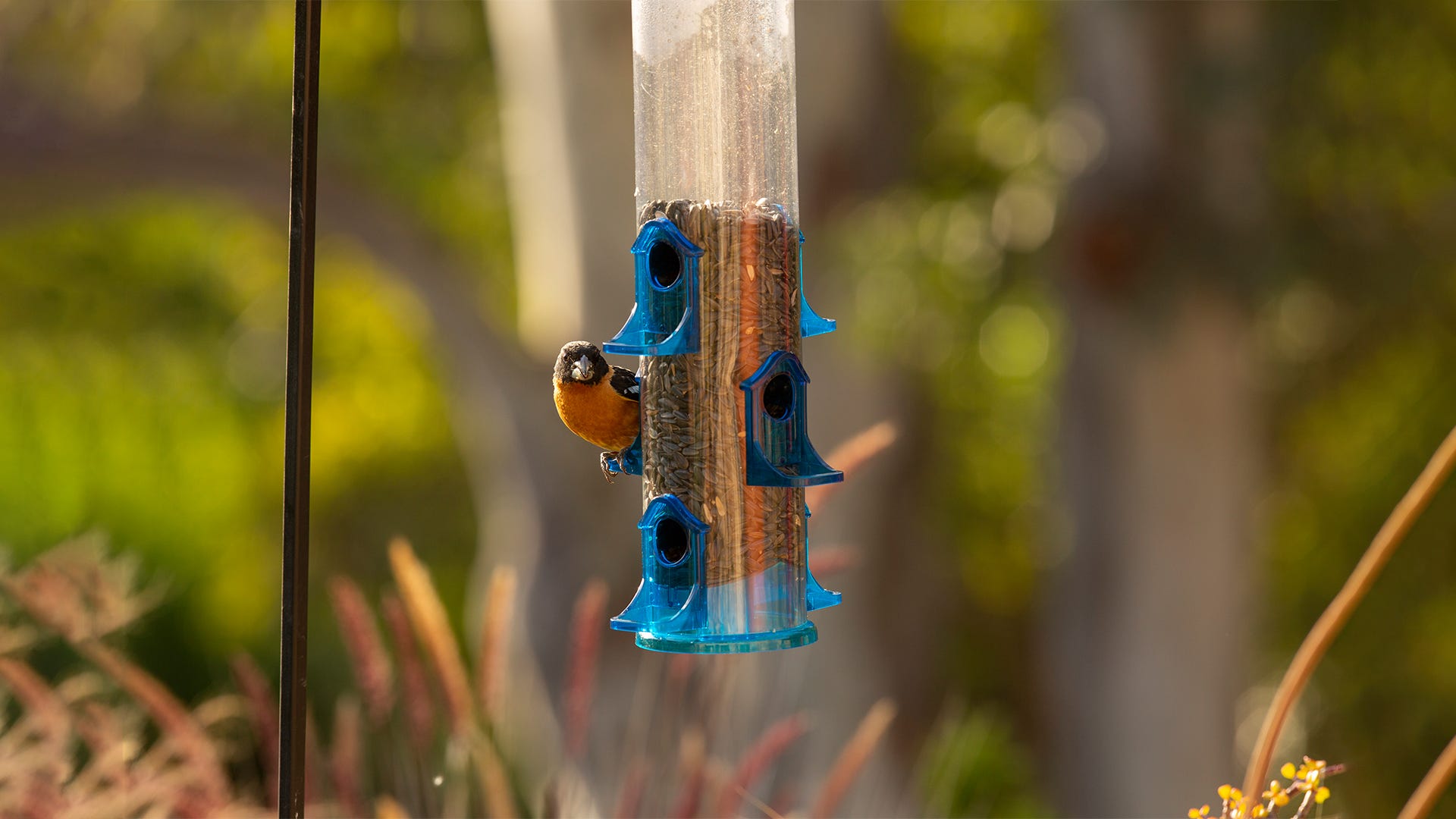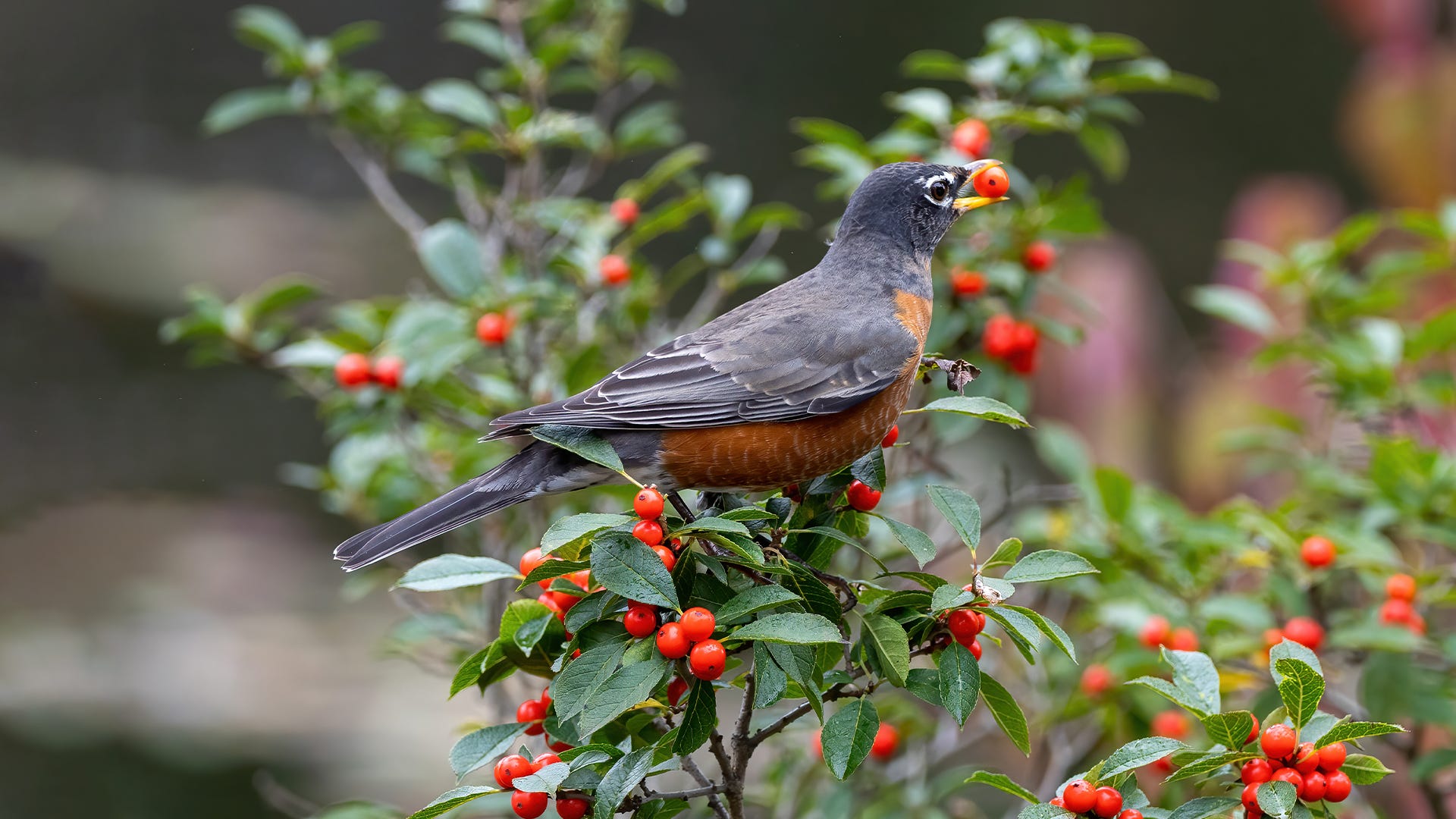
With their signature black and orange or yellow coloring and beautiful songs, orioles are a favorite among backyard birds. However, orioles are also known to be somewhat elusive due to their very particular habits.
To help you out, we’ve gathered a list of tips to help you attract the orioles in your region this spring. With just a few simple steps, your yard could soon become a sought-after haven for these stunning birds.
ATTRACT ORIOLES WITH A NEW FEEDER
Are Orioles in My Area?
There are nine different species of orioles found in the United States, although only five are widespread. In the winter, all of these species migrate south to spend the cold season in Mexico, Central and South America where food sources are more readily available. Orioles return in early spring, spreading out across many regions of the United States. Here's where you can find the five most common varieties:
Baltimore Oriole
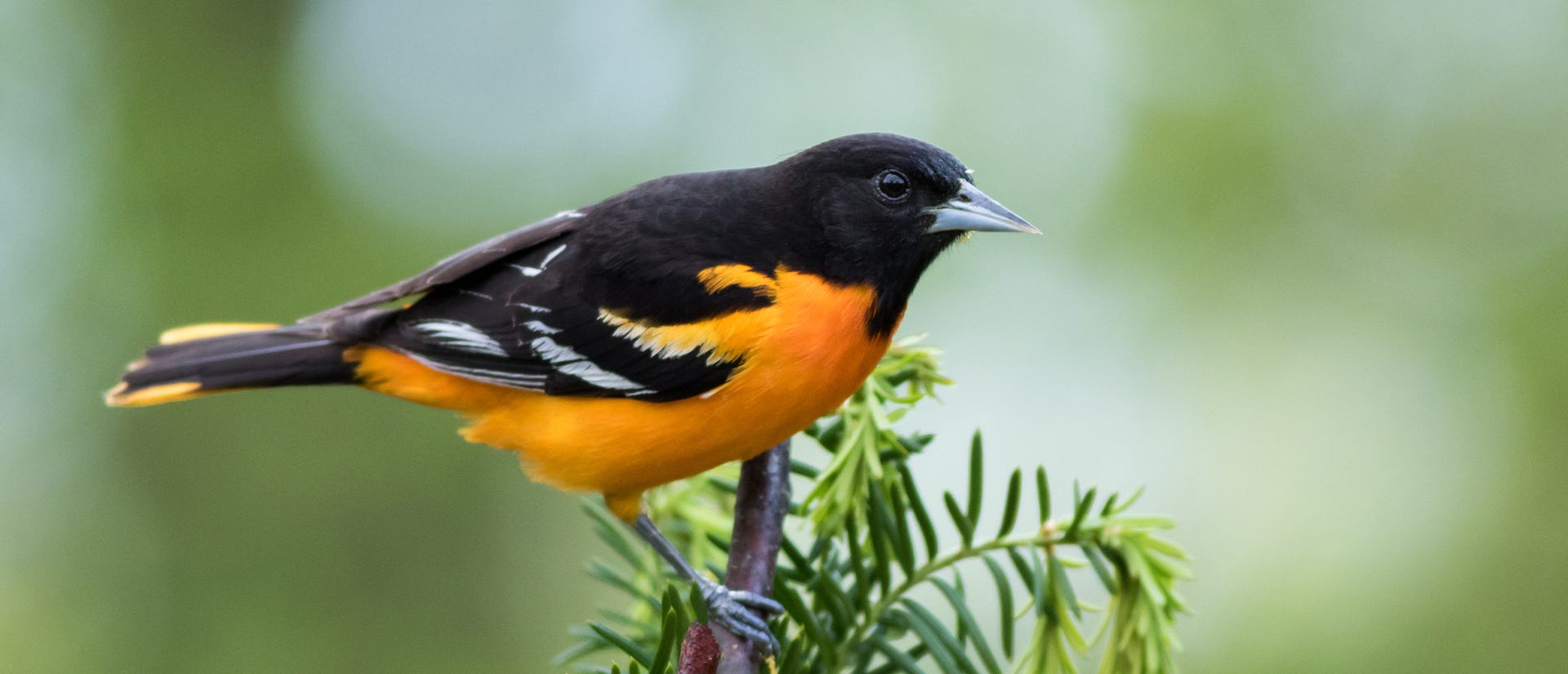
Baltimore Orioles – no, not the baseball team – are commonly found throughout the eastern and central regions of the United States. Their habitat range overlaps with the similar-looking Bullock’s Oriole in the middle of the United States. These two species sometimes breed together, creating a population of hybrid species where the range paths overlap. In winter, Baltimore Orioles depart south to the Caribbean, Central America, and northern South America – though they still may be located as far north as Florida.
Bullock’s Oriole
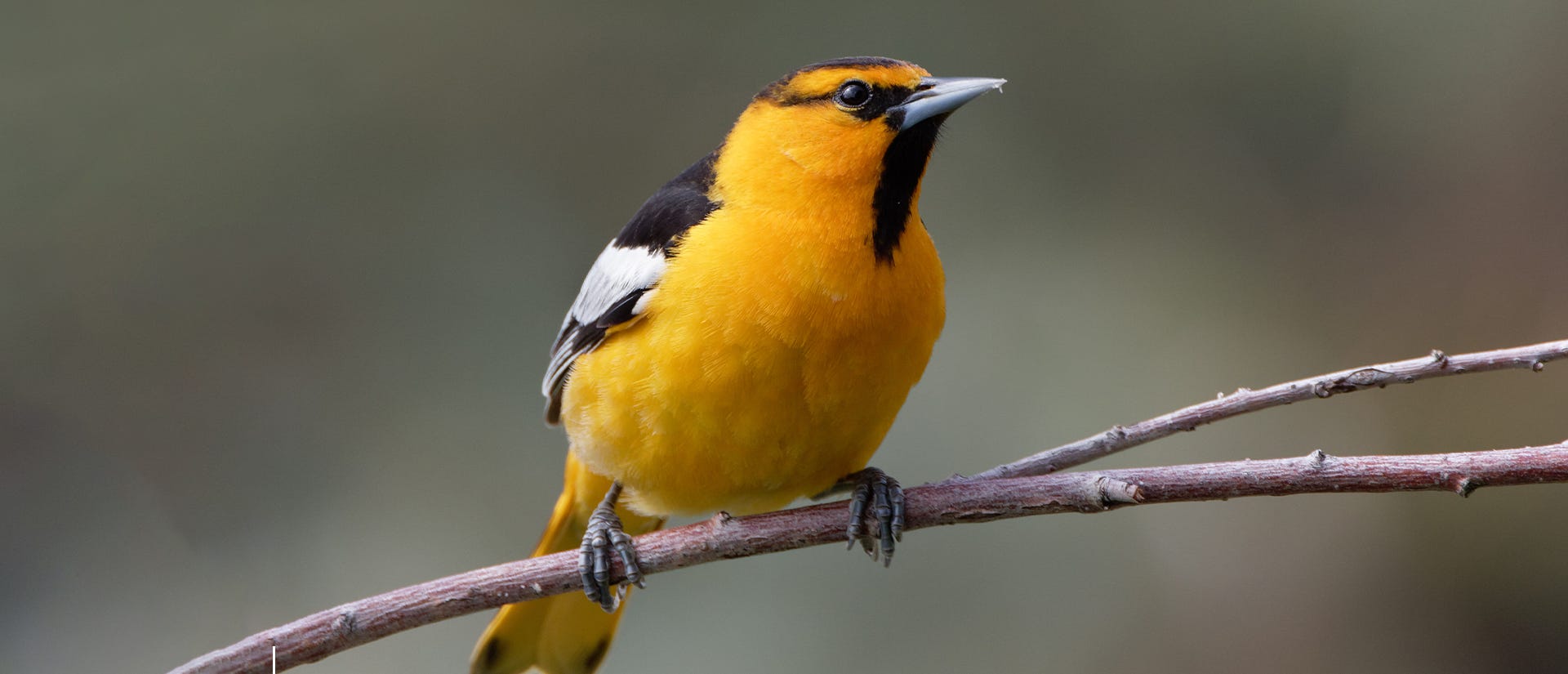
In the spring and early summer, Bullock’s Orioles reside in the western half of the United States. Their range ends around the Great Plains in the central portion of the country. It is here that Bullock’s Orioles sometimes cross paths with Baltimore Orioles. In the winter, these birds can be found in the western region of Mexico and occasionally in southern California along the coast.
Orchard Oriole
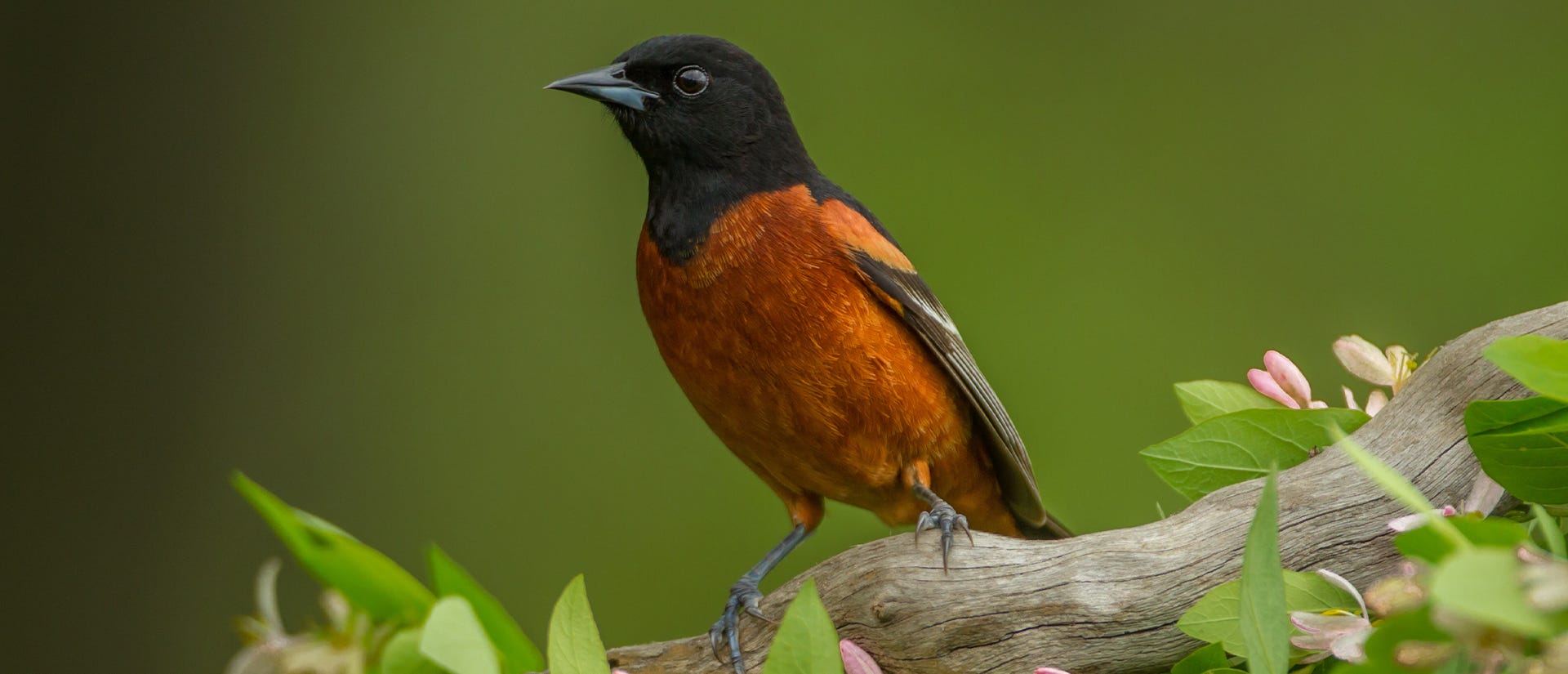
The habitat range of Orchard Orioles overlaps with that of Baltimore Orioles in the eastern and midwestern portion of the United States. However, Orchard Orioles aren’t typical feeder birds, so they are not spotted nearly as often. In addition, these small orioles don’t stick around in the U.S. nearly as long as their cousins do, so the window for spotting them is much smaller. Their spring arrival usually happens later than other oriole species and they sometimes migrate south as early as July.
Hooded Oriole
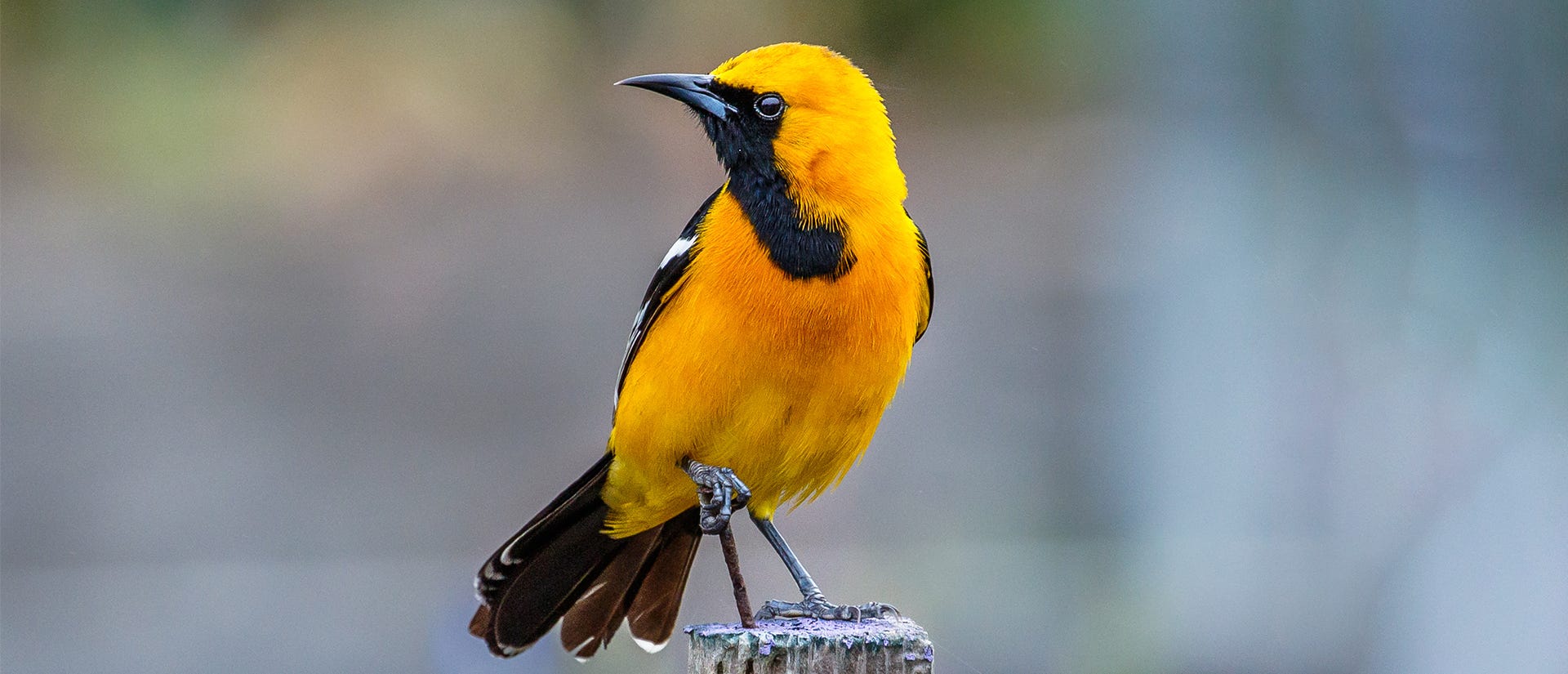
Named for their signature orange “hood”, Hooded Orioles are located in the southwestern region of the United States. Because these vibrant birds enjoy ornamental trees, they are frequently found in suburban neighborhoods of this arid region. Hooded Orioles migrate to Mexico and Central America when they head south for winter.
Scott’s Oriole
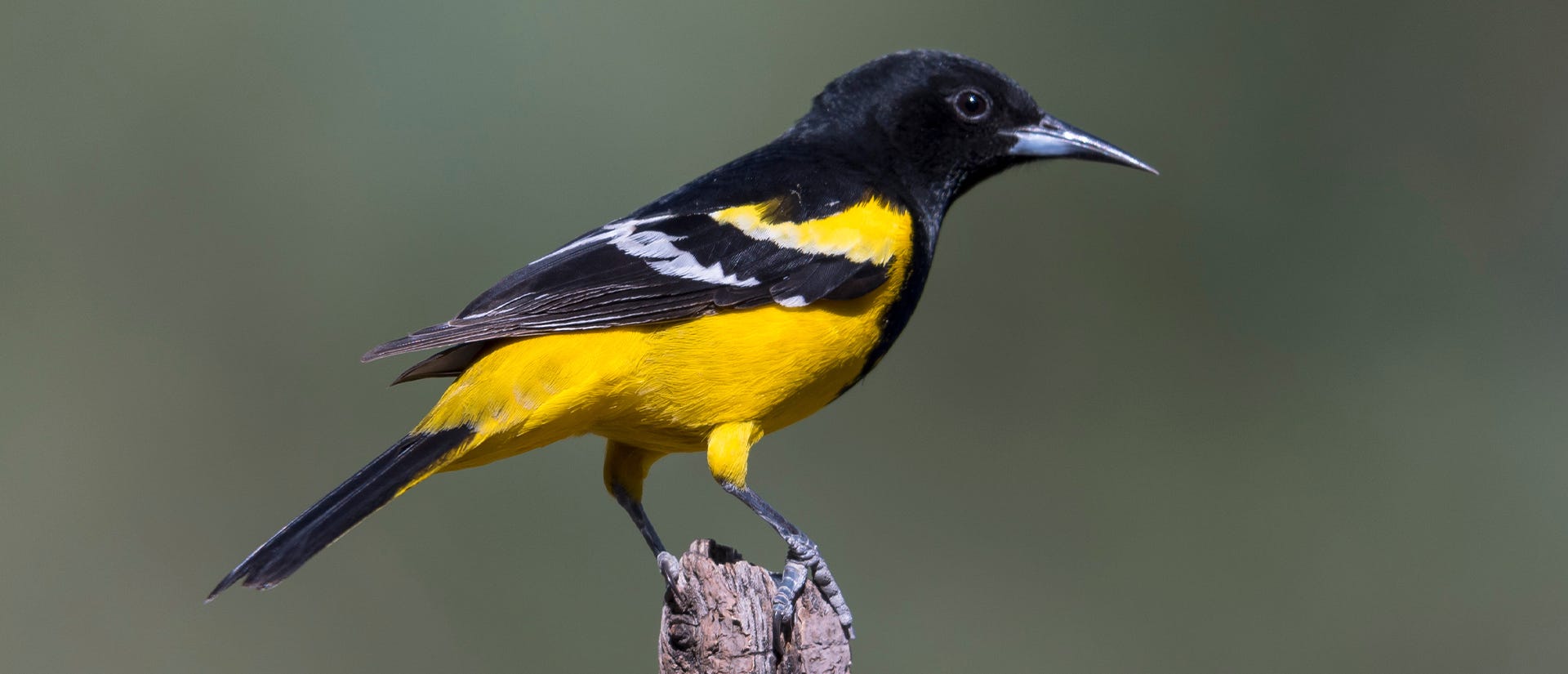
Like Hooded Orioles, Scott’s Orioles are found in the southwestern United States. Plus, good news for backyard birdwatchers, these orioles will avidly drink from nectar feeders so they are frequently spotted in yards and gardens. In winter, Scott’s Orioles migrate to Mexico and Central America.
The other four species – Streak-backed Orioles, Spot-breasted Orioles, Altamira Orioles and Audubon’s Orioles – can only be located in the southernmost regions of Florida or Texas.
6 Steps to Attracting Orioles
As with all birds, orioles need food, water, and shelter to survive. By meeting all of these needs and appealing to oriole’s specific preferences for each, you can make your backyard a favorite habitat.
1. Prepare Your Yard Early
One of the biggest mistakes many birders make when trying to attract orioles is that they don’t set up feeders early enough. Don’t wait until you’ve spotted the first oriole of the season before setting them out! Feeders should be placed several weeks before you expect them to arrive in your area. For most birds, putting up your feeders late wouldn’t matter much. Orioles, on the other hand, are creatures of habit, and timing matters – if they don’t find feeders in your yard upon their initial spring arrival, they most likely won’t use them later.
2. Brighten Up Your Landscape
Orioles are similar to hummingbirds in several ways. One of these similarities is their attraction to specific colors. While hummingbirds are attracted to red, orioles are particularly drawn to the color orange. They also like oranges, as in the fruit – but we’ll discuss that later. To catch the eye of orioles passing overhead, place orange feeders in visible spots around your yard. You could also try tying orange ribbon or surveyor’s tape around trees, railings, or bushes to lure them down from the sky. Once they figure out that your yard offers an abundant food source, they may decide to stick around.
3. Plan a Menu
When spring rolls around, orioles need lots of energy as they come to the end of their migration. To satisfy this need, orioles love to eat sugary, high-energy foods. Provide these beautiful birds with the sweet treats they love by placing feeders for nectar, jelly, and fruit around your yard.
On the other hand, orioles love oranges, as mentioned earlier. Many nectar feeders designed for orioles provide a specific location to offer orange slices. This way, your feathered friends can enjoy two of their favorite foods in the same place. Jelly is another great option to entice orioles.
Whatever you decide to feed them, be sure to keep it fresh. All of these sugary foods can become moldy. Only supply enough food that it will be consumed quickly and frequently replenished. Moldy foods make birds sick just as easily as they do humans.
Later in the summer, once they don’t require as much energy, orioles typically alter their diet to include more insects and less sugar. These offer more protein to support them throughout the nesting season. Keep them coming around through the remainder of the summer by providing mealworms and even suet.
Shop Perky-Pet® Oriole Nectar »
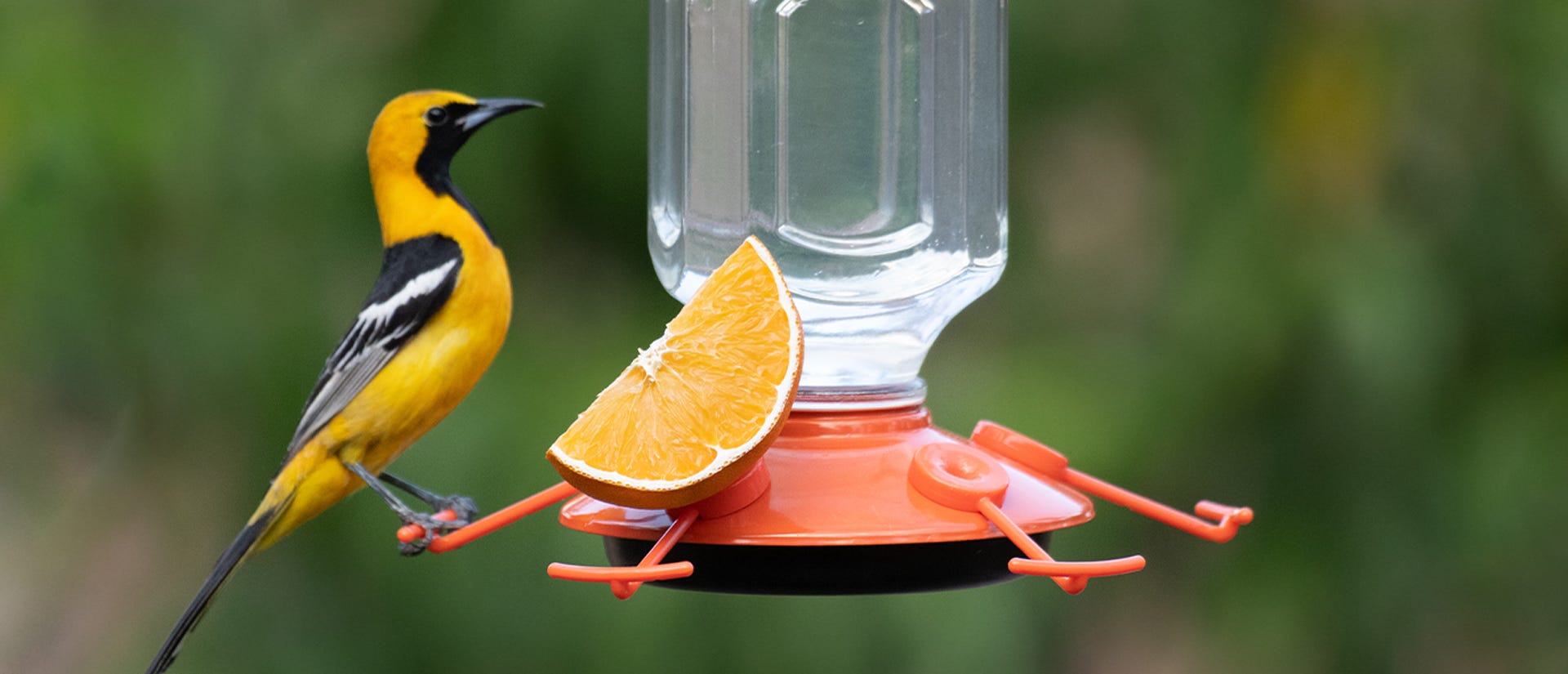
4. Select Proper Feeders
Orioles will imbibe the same nectar as hummingbirds, so you can easily use the same feeders as long as there isn’t too much competition. There is one distinction, however – orioles cannot hover at feeders as easily as our fast-flying hummingbird friends can. Ensure they can feed with ease by providing nectar feeders with perches. This will allow orioles to take a seat and enjoy their sugary treats!
If your existing hummingbird feeders do not feature perches, then you can also opt for feeders specifically designed for orioles. Oriole nectar feeders may offer spots to place orange slices for dual feeding duty. To supply them with jelly, place some of the sweet substance in a dish –though this may attract ants – or invest in a jelly feeder, which will dispense jelly directly from a store-bought jar.
5. Provide Water Sources
All birds need water, and orioles are no exception. They need to have a source of water available for bathing and drinking. Provide these sweet songbirds with birdbaths and bird waterers for a convenient water source. Be careful never to overfill your baths – water should be no more than 2 to 3 inches at its deepest point.
Also, orioles love moving water! Add drippers or bubblers to your baths, if possible so that they can enjoy the sight and sound. Just as with your feeders, water sources should be cleaned and replenished frequently. Stagnant water can create algae and dirt build-up, which will drive the birds away.
6. Encourage Nesting
To attract orioles to your yard on a more permanent basis, be sure to encourage nesting. You can do this in two ways. The first is to ensure that your yard has the types of plants and trees that orioles enjoy for nesting sites. Find out about the oriole species common to your area to learn about their specific preferences. For example, Hooded Orioles actually sew their nests to the underside of large overhanging leaves from palms, yucca or other trees.
The second thing you can do to encourage nesting is to provide nesting materials. Like all birds, orioles forage around their chosen nesting area to find materials for building. You can help them out by filling a basket with things like yarn, string, and cloth strips. The easier it is for them to find materials, the more likely they will be to build a nest in your backyard!
Enjoying Your Oriole-Filled Yard
Orioles can sometimes be elusive birds, so don’t worry if your steps don’t elicit immediate results. Keep at it! It may take a few seasons before you see a noticeable population increase in and around your yard. The colors and songs these birds have to offer are well worth the effort.
If you want to know more about attracting orioles to your yard this spring, let us know. On your next visit to our Facebook page, share pictures and stories about your oriole visitors – we’d love to hear them!
Also, be sure to subscribe to our e-newsletter, which will direct you to other interesting articles and alert you about new products.





